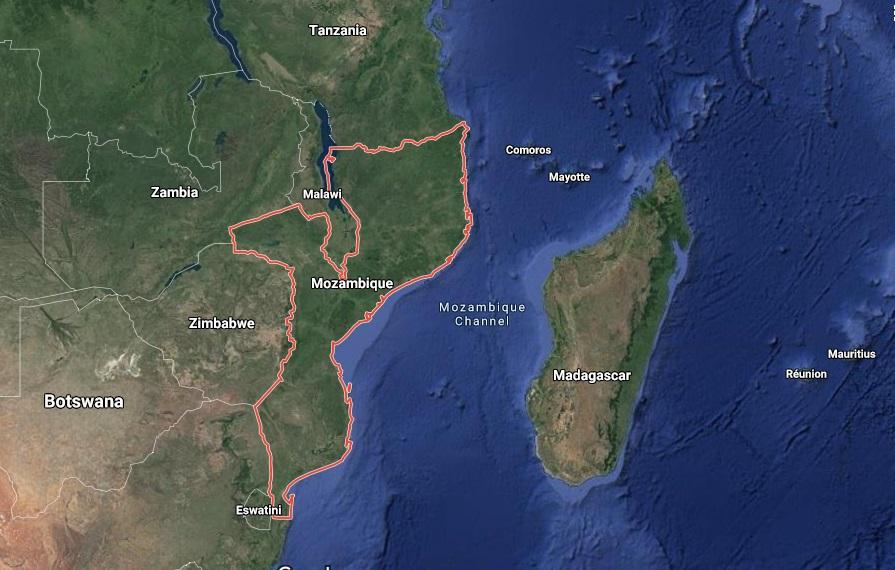Africa-Press – Mozambique. A dramatic drop in household spending in the past five years is shown in the 2019-20 Family Expenditure Survey (Inquérito sobre Orçamento Familiar, IOF). Median spending dropped 17% in five years, making most people poorer than they were a decade ago. Urban spending fell 24% while rural spending dropped 13%. Gaza (down 42%), Maputo city (down 38%) and Cabo Delgado (also down 38%) were hit hardest. All spending, including food, was sharply reduced.
The IOF is a very detailed structured survey conducted every five years by the National Statistics Institute (Instituto Nacional de Estatística, INE) and the 2019-20 survey was published on 24 September. Comparing with the IOF’s of 2014-15 and 2008-09, shows that there after six years of significant growth in household spending (and increased inequality) up to the 2014-15 survey, Mozambicans were hit hard in the next five years to 2019-20.
The fall in the past five years is so large that it wiped out all the gains of the previous six years. Median spending per month per person was $27.60 in 2019-20, lower than the $28.80 of the 2008-09 IOF.
The survey shows that 75% of Mozambican spend less than $1 per day, more than 90% are under the World bank international poverty line of $1.90 per day. The survey also shows huge inequality, noting that the poorest “50% of the population accounts for 14.7% of the total expenditure. The share of the poorest 10% of the population is only 0.8% of total national expenditure, and the richest 10% of the population account for 43.1% of total expenditure.”
Looking separately at urban and rural and comparing 2019-20 to 2014-15 shows the scale of the drop. In constant 2019/20 Meticais, urban residents cut their spending by one quarter in those five years, and urban spending is more than double rural spending. (Constant meticais means adjusting 2014-15 according to the consumer prices index.) But if one looks at the US dollar value, the huge devaluation in 2016 due to the secret debt crisis had a major effect. In $ terms, rural spending fell by one-third, but urban spending fell by 41% – from $2.36 per person per day to $1.37.
The changes by province are also notable, with major drops of spending in the south and Cabo Delgado and Nampula, but little change in the centre – Manica, Sofala, Tete and Zambezia.
High inequalities continue, with poorest hit worst
The data also shows the very high inequalities, as well as the drop from 2014-15. Data below is in quintiles – that is population is divided into fifths, from poorest fifth to richest. This data is in 2019-20 Meticais, and again is spending per person per month. Note that only the richest half of the population gained from the growth between 2008-09 and 2014-05, and then lost those gains between 2014-15 and 2019-20. By contrast, the poorest half of the population gained nothing in the first period but lost substantially in the second period – so they are much poorer than they were a decade ago. The poorest fifth of the population spent MT 571 (in current Meticais) per person per month, but are now spending MT 224. That means each person in the poorest fifth spends less than MT 4 per day.
The final chart divides people by wealth into tenths – deciles – and compared only 2019-20 with 2008-09. This time is uses $ in the year of the survey. In $ terms little changed in 11 years. The richest decile has 50 times the wealth of the poorest and four times the expenditure of the national average.
Markers of under-development
The IOF also has extensive details on expenditure. For example, for the poorest half of the population, more than half their spending is on food. But for the top 20%, it only 23% goes on food. For the poorest half of the population, nearly half of food expenditure is on cereals and bread and only 6% on meat; for the best off 20%, only 29% of food spending is on cereals and bread, but 20% is on meat. Median food spending fell 12% between 2014-15 and 2019-20.
Clothing spending fell 11%, housing and utilities fell 19%, and transport fell 18%.
Of the working population 73% are farming or fishing, 10% are trading, and 10% are in services. But the rural-urban split is clear: In rural areas it is 89% farming and fishing, 4% trading, and 3% service, while in urban zones it is 39% farming, 22% trading, and 25% services.
In urban areas, 70% have access to the electricity system, compared to only 9% in rural areas. But 7% in rural areas have generators or solar panels. In urban areas 50% cook with charcoal, while in rural areas 93% cook with wood.
Illiteracy has fallen from 45% in 2014-15 to 40% in 2019-20, when 27% of men but 51% of women were illiterate. Niassa has the higher illiteracy at 54%, followed by Cabo Delgado and Nampula 52%, Zambezia 50%; the lowest is Maputo city at 7%. The highest illiteracy rate for women is 67% in Cabo Delgado. The number of illiterate young people who should have attended school is high – age 15-19 28% illiterate, age 20-29 32% illiterate.
Technical notes and further information
The last three IOFs are on my home page: http://bit.ly/Mozamb
It is easier to read the tables on the pdf of this issue. https://bit.ly/Moz-571-IOF
I have produced a special technical annex on https://bit.ly/Moz-571-IOF-Annex with more detailed tables and an explanation of changes to the presentation of IOF tables and comparisons of different IOFs.
Comment
Statistics are political
The IOFs and every ten year censuses are done by the National Statistics Institute (Instituto Nacional de Estatística, INE) and are very well done and trusted. However, what is done with those statistics can be highly political. In 2019 the government justified inflating the voters role in Gaza by more than 200,000 voters by saying the national census undercounted huge number of voting age adults. The respected heads of the INE and of the census spoke out to defend the census and were both dismissed.
The INE produces the IOF but its parent Ministry of Economy and Finance (MEF) later produces a report on the impact on poverty. In both its reports on the 2002-03 and 2014-15 IOFs, MEF “adjusted” the poverty line to show a significant decrease in poverty. https://bit.ly/Moz-344-Pov
If this is done with the 2019-20 IOF, INE officials will remember the warning to stay quiet.
By
Joseph Hanlon






